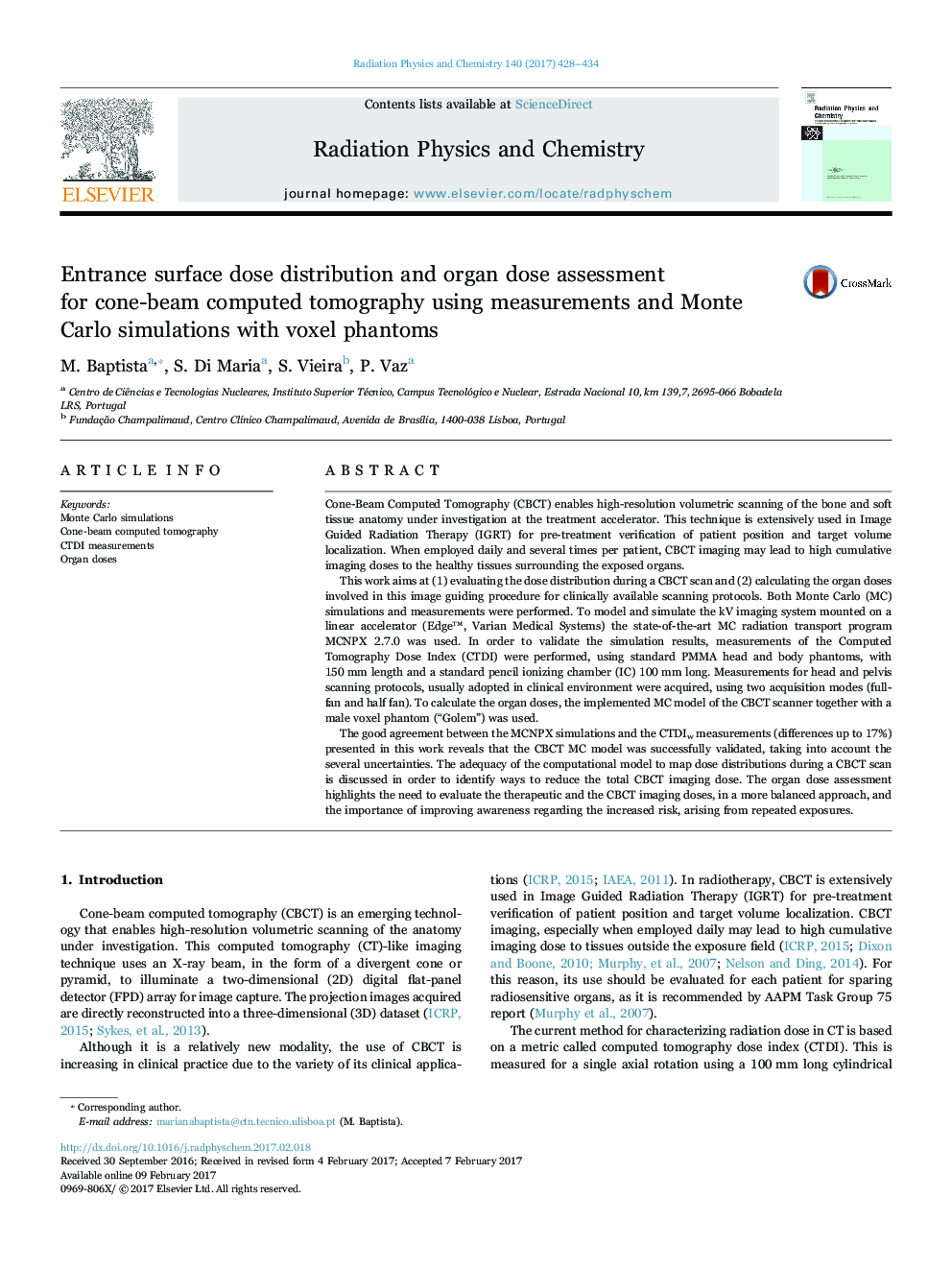| کد مقاله | کد نشریه | سال انتشار | مقاله انگلیسی | نسخه تمام متن |
|---|---|---|---|---|
| 5499123 | 1533484 | 2017 | 7 صفحه PDF | دانلود رایگان |
- CTDI measurements in a kV Cone-Beam Computed Tomography (CBCT) imaging system.
- MCNPX simulations to model CBCT equipment and voxel phantom to calculate organ doses.
- Validation of the MC model through comparison with CTDI measurements.
- Determination of dose distribution for two CBCT scanning protocols (head and pelvis).
Cone-Beam Computed Tomography (CBCT) enables high-resolution volumetric scanning of the bone and soft tissue anatomy under investigation at the treatment accelerator. This technique is extensively used in Image Guided Radiation Therapy (IGRT) for pre-treatment verification of patient position and target volume localization. When employed daily and several times per patient, CBCT imaging may lead to high cumulative imaging doses to the healthy tissues surrounding the exposed organs.This work aims at (1) evaluating the dose distribution during a CBCT scan and (2) calculating the organ doses involved in this image guiding procedure for clinically available scanning protocols. Both Monte Carlo (MC) simulations and measurements were performed. To model and simulate the kV imaging system mounted on a linear accelerator (Edgeâ¢, Varian Medical Systems) the state-of-the-art MC radiation transport program MCNPX 2.7.0 was used. In order to validate the simulation results, measurements of the Computed Tomography Dose Index (CTDI) were performed, using standard PMMA head and body phantoms, with 150 mm length and a standard pencil ionizing chamber (IC) 100 mm long. Measurements for head and pelvis scanning protocols, usually adopted in clinical environment were acquired, using two acquisition modes (full-fan and half fan). To calculate the organ doses, the implemented MC model of the CBCT scanner together with a male voxel phantom (“Golem”) was used.The good agreement between the MCNPX simulations and the CTDIw measurements (differences up to 17%) presented in this work reveals that the CBCT MC model was successfully validated, taking into account the several uncertainties. The adequacy of the computational model to map dose distributions during a CBCT scan is discussed in order to identify ways to reduce the total CBCT imaging dose. The organ dose assessment highlights the need to evaluate the therapeutic and the CBCT imaging doses, in a more balanced approach, and the importance of improving awareness regarding the increased risk, arising from repeated exposures.
Journal: Radiation Physics and Chemistry - Volume 140, November 2017, Pages 428-434
